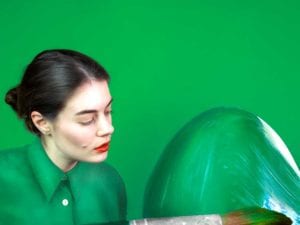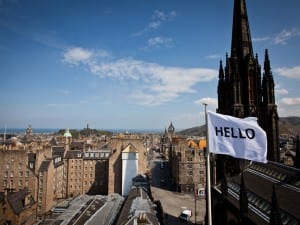Liverpool Hope University’s Department of Fine and Applied Art focuses on exploring visual possibilities. Students are encouraged to produce art that is aware of the surrounding art world and the context in which they live. Recently ranked among the top universities for student satisfaction in the National Student Survey, the department is made up of staff that are practising artists and have exhibited locally, nationally and internationally. We speak to two students on the Fine Art and Design courses about the value of their experience in Liverpool and the future direction of their art.
Ant Hamlyn – Fine Art
A: How has your art practice developed since starting your Fine Art Degree at Liverpool Hope University?
AH: When I started at Liverpool Hope in 2012 I was working loosely in sculpture. I knew at the time that I was trying to think conceptually about what I was making even though I realise now my knowledge was very basic. Looking back it feels a million miles from what I make now; I didn’t expect that I would end up being so interested and involved with the participatory, kinetic side of visual art. I still make sculptural work, but I am now far more extravagant and confident with my ideas. I now work on a much larger scale, include electronics and am heavily interested in the way in which my work is accessed and experienced. Being at Hope has shaped my ideas and practice not only to consider what I’m making, but why I’m making it and how it could be interpreted.
A: Are there any particular artists that have inspired you practice?
AH: I would say that over the three years, I have encountered several incredibly inspiring artists; if I had to pick, I would say; Allan Kaprow, Arthur Ganson, John Cage and the wizard… Marcel Duchamp.
A: How important is audience interaction in inspiring the artworks you make?
AH: Extremely important. I aim to create a dialogue between the artist, the artwork and the viewer. I feel that by inviting some level of physical participation I can encourage a temporal relationship between the viewer and the work. It is important for me that my work encourages this idea of play and applies it to concepts of art making.
A: What emotions or reactions in particular, do you want to get from your audience?
AH: I want my audience to enjoy and remember my work. I make a conscious decision when creating the work to address multiple aesthetic concerns. In using lights, buttons, levers and negative space I aim to make the work as inviting and user friendly as possible. I find participatory work within a gallery environment is extremely stimulating and I try and translate this into my own practice. The emotional response to the aspect of play is important in my work and I feel the work is successful if I can create something that takes the viewer out of context with the rest of the world, even if only temporarily.
A: Where do you see your professional practice developing in the future?
AH: I intend to stay in Liverpool and continue my practice; I believe there is a powerful and exciting network of artists and projects within the city. I am also very keen to curate shows and to take on residencies, as I believe they can be extremely rewarding and positive to the evolution of my artistic life. I am progressing further into the digital with my work now and am excited to start incorporating coding and programming into my sculptural installations. I want to create more elaborate work with the intention of exhibiting worldwide.
Hannah Williams – Design
A: Which artists or designers have influenced your work the most?
HW: I always keep up to date with designers such as Erdem, Valentino and Burberry Prorsum. I purchase Vogue every month, which inspired me to work with suede and the 1970s style. Alongside my final collection I wrote a special study about sustainable and fast fashion, and this inspired me to use sustainable materials.
A: Your work features beautiful patterns, what do you want the audience to take from your art?
HW: I wanted to create interesting patterns and textures that people want to touch and look at closely. My prints all have different features, including beading, luxury velvet and laser cut. A big part of my project is looking at colour and how, even though there is diversity in colour, they can still unite in a collection.
A: Have you any ideas for your next collection?
HW: For my next collection I’d like to keep my 1970s style and introduce more of my drawings to create interesting, full, bold and sustainable prints and garments. I’d also like to create prints that could be used for interiors and fashion.
A: You studied Design at Liverpool Hope University – how did you find the experience?
HW: Studying at Liverpool Hope has been one of the best experiences of my life, moving into a creative city has inspired all of my work and my future. The course is great. The team is fabulous and the University has great facilities in ceramics, metal, digital and textiles.
Visit Liverpool Hope University on the Open Days – Wednesday 24 June or Saturday 27 June www.hope.ac.uk/opendays
Credits
1. Hanna h Williams.
2. Ant Hamlyn, The Basketball Hole Punch.




